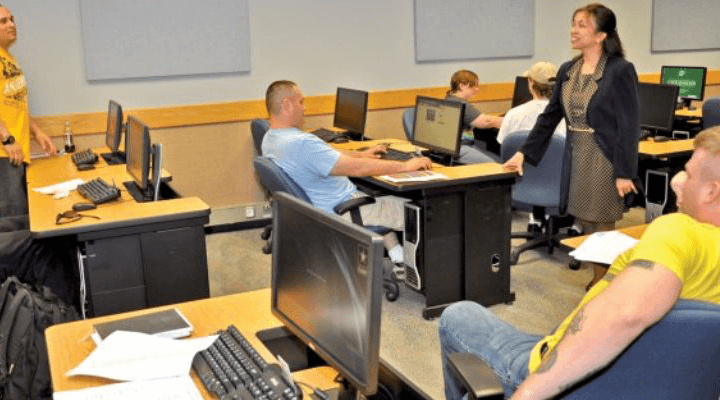The mandatory portion of the military’s Transition Assistance Program includes pre-separation counseling, the main three parts in the TAP curriculum, and the Capstone at the end.
In addition to the required aspects, there is a non-mandatory part of TAP which mainly consists of optional “tracks” that service members can take as an extended part of their TAP training.
Non-Mandatory Tracks
Because no two service members are exactly alike, nor do they have the same transition issues and concerns, some may want to take one or more of the three additional tracks available. They are called tracks because each one can take your civilian transition in a different direction – much like three sets of train tracks each going in a different direction.
Boots to Business
This track is geared toward servicemembers wanting to start their own business after getting out. Created by the Small Business Administration (SBA), it includes some resources available, follow-on assistance and helps the servicemember determine if entrepreneurship is right for them or not. If they find out starting their own business is not for them, they may want to take one or both of the other two tracks available.
Higher Education
In this track, departing servicemembers identify if their career goal will require any additional education requirements. If so, this track then helps the individual choose an appropriate course of study, the right school for them that teaches the training, funding options in conjunction with the GI Bill, or in place of it if GI Bill benefits are exhausted, and help on how to navigate the college admission and enrollment process. Some schools make the process easy by having a one-stop shop as part of their veterans’ support program; in other schools, the process can be more laborious. As part of this training, students compare at least two different schools finalizing the choice of training with a comparison chart they can use to select the rights school for them.
CEPT
Short for Career Explorations and Planning Track, this two-day course taught by the DOL, starts by asking soon-to-be veterans two questions:
* What are your career goals?
* What steps do you need to take to attain those goals?
As part of helping students answer these two questions, the program helps identify transferable skills, recognize credentials that can transfer to a civilian career, and write up a plan of action. Part of the course also includes an assessment workshop aimed at identifying interests, hobbies, aptitudes and work values that can all factor into the final plan of action.
And because spouses can also take the workshop and training, it can identify careers for them that fall in line with the high demand and high growth occupations that are part of the MyCAA program.
After exploring career considerations like certification, certificates, licensure, apprenticeships and job growth projections, graduates of the course come away with answers to the questions first asked in the beginning – career goals and the steps to get there.
TAP should be viewed as a resource that helps servicemembers and families leave the military and assimilate into the civilian world a little easier than if they had not taken the training. And because it is free for both the service member and spouse, there isn’t anything to lose but a little time and everything to gain.




